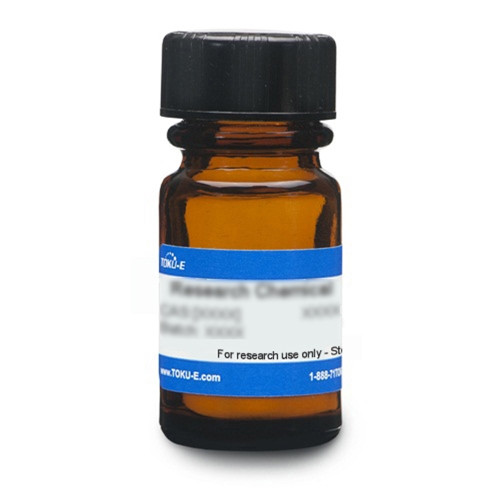Pirlimycin Hydrochloride, Mixture of Diastereomers is the hydrochloride salt form of Pirlimycin, a semi-synthetic tetracycline analog and derivative of clindamycin, a broad-spectrum antibiotic belonging to the lincosamide family, which has activity against anaerobes and protozoa. The hydrochloride salt forms at the basic pipercolic acid moiety. Diastereomers are sterioisomers that are not mirror images of each other.
Pirlimycin Hydrochloride, Mixture of Diastereomers is soluble in ethanol, methanol, DMF and DMSO.
We also offer:
| Molecular Formula | C17H31Cl1N2O5S • HCl |
| Spectrum | Pirlimycin Hydrochloride is active against Gram-positive bacteria including Staphylococcus, Streptococcus, Bacterioides, and Plasmodium. It is also active against anaerobic bacteria and protozoa. |
| Mechanism of Action | Pirlimycin inhbits bacterial protein synthesis by binding to the 50S ribosomal subunit and thereby inihibiting peptidyl transferase. |
| Microbiology Applications |
In vitro activity of Pirlimycin Hydrochloride and its primary metabolite, Pirlimycin sulfoxide, was investigated. Lowest MIC50 was observed in Bifidobacterium spp. and Eubacterium spp. (0.06 µg/ml). Pirlimycin sulfoxide was less active, with lowest MIC50 of 1 µg/ml in EUbacterium spp. Therefore, the parent compound showed a 16-fold higher antimicrobial activity comparied to Pirlimycin Sulfoxide. Pirlimycin Hydrochloride is the active component of Pirsue, an aqueous gel given via intramammary infusion to treat mastitis in lactating dairy cattle. Microbiological investigation can be evaluated for the antimicrobial effectiveness against different groups of bacteria. Several studies have found in vitro resistance to Pirlimycin. Parent Pirlimycin is the only significantly microbiologically active residue in milk and tissues, and methods to detect residues both qualitatively and quantitatively. In addition to a microbiological assay, high specific HPLC/TSP/MS method is available to measure residues in tissue and milk (Ref). ELISA-based detection for food safety protocols have been developed for beef, milk, and honey samples. Pirlimycin is the marker residue in milk. Pirlimycin residues in milk, egg, beef and honey was detected via a gold immunochromatographic strip. This strip simultaneously detected Pirlimycin, clinamycin and lincomycin simultaneously with a single monoclonal antibody and quantified with a handheld strip scanner for rapid on-site screening (Guo et al, 2019). |
| Mechanism of Action |
Pirlimycin binds to the 23S ribosomal subunit, blocking protein synthesis. |
| References |
Ahonkhai VI et al (1982) In vitro activity of U-57930E, a new Clindamycin analog, against aerobic Gram-positive bacteria. Antimicrob. Agents Chemother. 21:902 Birkenmeyer RD et al (1984) Synthesis and antimicrobial activity of Clindamycin analogs: Pirlimycin, 1,2 a potent antibacterial agent. Med. Chem. 27:216 Lindeman CJ et al (2013) Susceptibility to antimicrobial agents among bovine mastitis pathogens isolated from North American dairy cattle. J. Vet. Diagn. Invest. 25(5):581-591 EMEA/MRL/460/98. Summary Report. Pirlimycin. European Agency for the Evaluation of Medicinal Products, Veterinary Medicines and Information Technology Unit. Committee for Veterinary Products. July 1998 |








